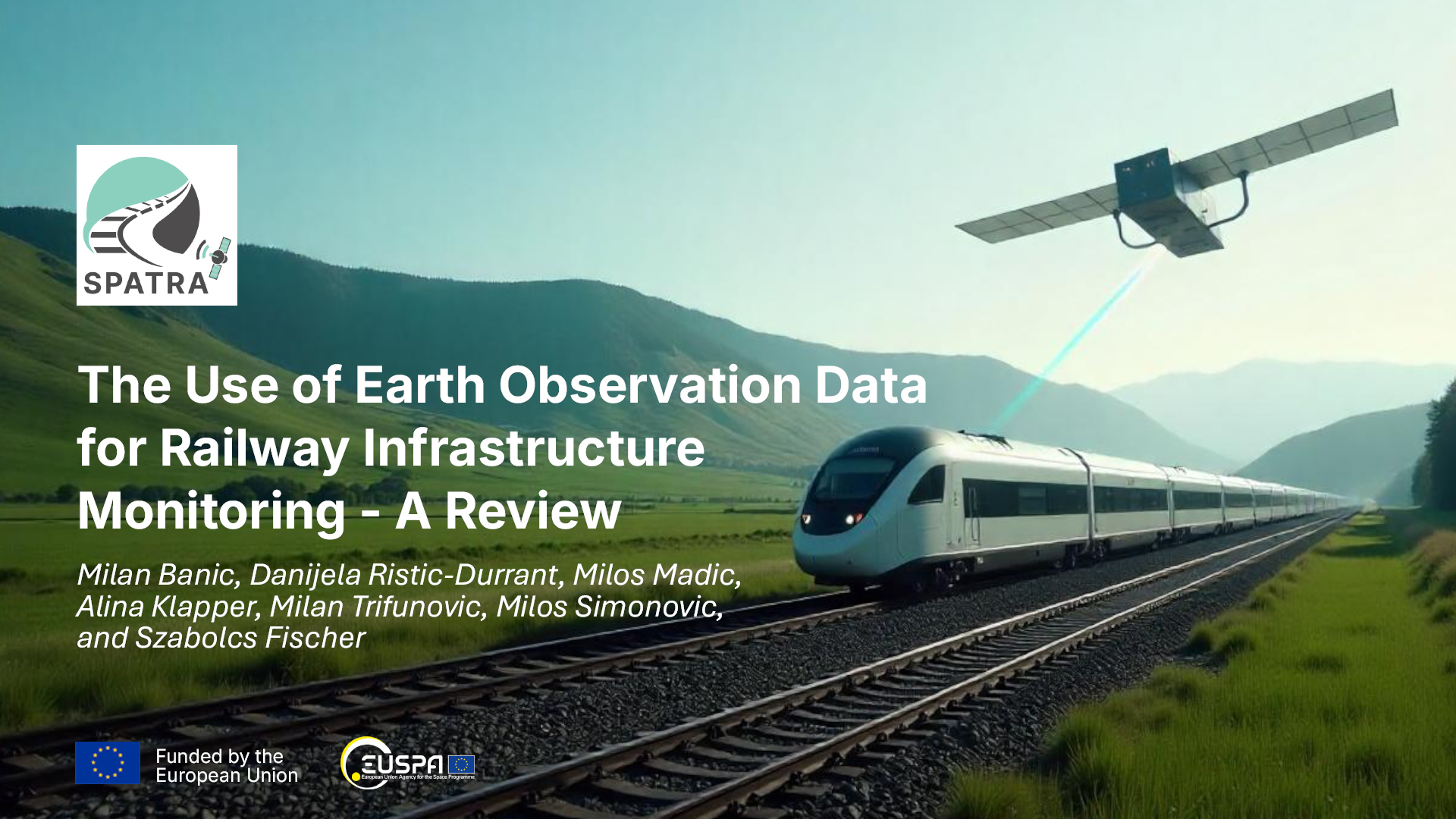New publication: The Use of Earth Observation Data for Railway Infrastructure Monitoring – A Review

Expanding the Role of Earth Observation Data in Railway Infrastructure Monitoring
A comprehensive review authored by Milan Banic, Danijela Ristic-Durrant, Milos Madic, Alina Klapper, Milan Trifunovic, Milos Simonovic, and Szabolcs Fischer explores how Earth Observation (EO) satellite data can enhance railway infrastructure monitoring. The article, published in Infrastructures (2025), offers an in-depth look at current EO applications, identifies key limitations, and highlights innovative directions for the future of rail infrastructure management.
Possibilities for Increased use of EO Data in railways
Railway applications have established use of Global Navigation Satellite Systems (GNSS) for positioning and navigation. However, this review highlights that EO data is still underexploited despite its ability to support infrastructure health monitoring across large networks.
The paper provides a structured overview of EO-based applications in railways, detailing how SAR and optical sensors can help detect track deformations, monitor ground movement, assess vegetation encroachment, and evaluate flood risks. The authors emphasize that EO data can support cost-effective, scalable solutions that extend beyond the limitations of conventional inspection methods.
Key Use Cases in EO-Enhanced Monitoring
The review breaks down EO applications into several high-impact use cases:
-
Rail Track and Ground Deformation (TD, GD): SAR data enables millimeter-scale detection of settlement, subsidence, and structural shifts, helping predict maintenance needs before issues escalate.
-
Bridge and Tunnel Monitoring (B, TZ): Long-span bridges and tunnels face challenges due to aging and environmental stresses. SAR, optical, and thermal imagery provide a remote, reliable way to track their structural integrity.
-
Vegetation and Flood Risk Monitoring (VG, WL): Optical sensors like Sentinel-2 and Landsat can identify vegetation threats and detect flood-prone zones near tracks, which is essential for safe operations, especially under changing climate conditions.
EO Data, AI, and Integration Challenges
While the potential is clear, the authors point out several challenges:
-
EO data is often underused in real-time analytics due to the limited integration with ground-based sensors and AI tools.
-
High-resolution optical data is costly, and free alternatives often lack the necessary detail for precise monitoring.
-
Cloud cover and revisit times hinder the continuity of optical data collection.
To address these, the authors recommend combining EO data with AI-driven analysis, IoT networks, and hybrid models that include thermal, SAR, and multispectral datasets. Emerging machine learning techniques like self-supervised learning and data fusion can help improve reliability and overcome data scarcity.
Insights from European Projects
Two EU-funded projects in which the authors are involved demonstrate cutting-edge use of EO in rail:
-
SPATRA (Space-based Applications for Transport Monitoring and Management) uses thermal satellite data and machine learning to estimate track temperatures and detect heat stress zones.
-
IIMEO (Instantaneous Infrastructure Monitoring by Earth Observation) aims to deliver near-real-time obstacle detection using SAR image tiling and change detection onboard satellites.
Both projects showcase how satellite data can move from research to practical infrastructure management tools.
Future Outlook
The review concludes that integrating EO data with AI, IoT, and multisource datasets is critical for the future of smart railway management. Recommended next steps include:
-
Increasing the use of hybrid imaging (thermal + SAR + optical)
-
Enhancing public–private cooperation to lower data access costs
-
Applying explainable AI to improve monitoring transparency and decision-making
As climate events and infrastructure demands evolve, EO technologies offer promising tools to support proactive, scalable, and sustainable railway infrastructure monitoring.
Access and Further Information
The full publication and supporting materials are available on Zenodo.